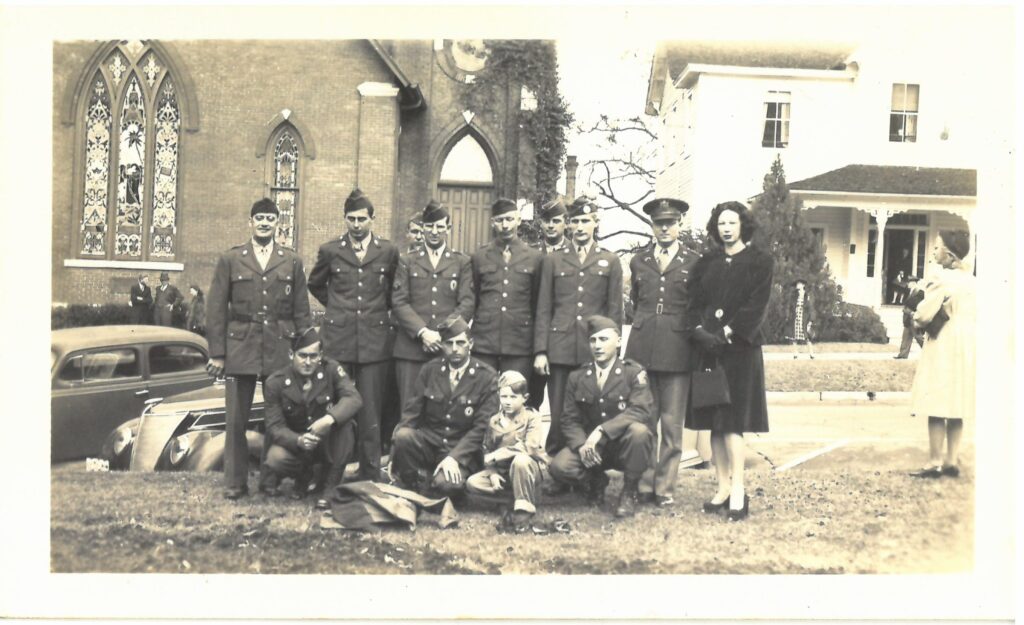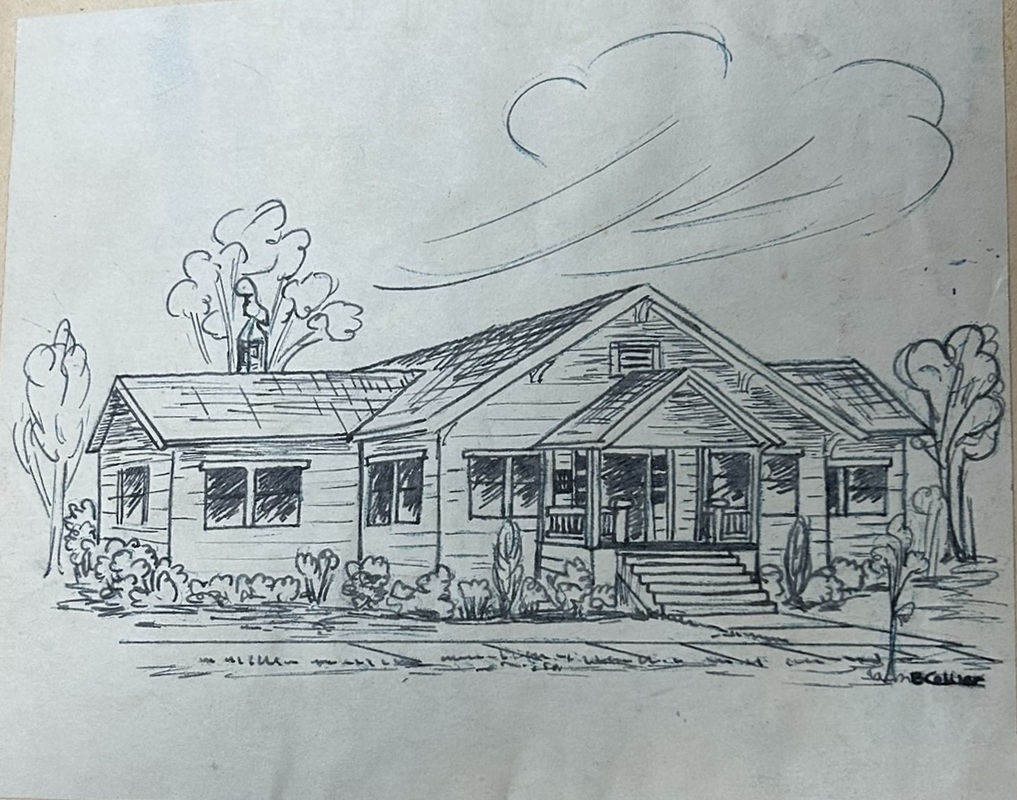By Gloria Colvin, Chair of the Bicentennial Publicity Committee
The opening of Trinity’s third building in 1893 led to a time of active growth for the church. Church membership increased from 247 in 1890 to over 1,000 by 1930 and exceeded 2,000 by 1943, due in part to revivals and an emphasis on evangelism. An Epworth League for young people was established in 1896 and continued to attract new members for several decades. The League was divided into Junior, Intermediate, and Senior Leagues that met on Sunday afternoons for programs and social activities and engaged in service projects during the week. To accommodate the growing League and Sunday School, an addition to the church building was completed in 1910. In the early 1840s the church was rearranged internally to allow for more congregational seating. Partitions that had allowed for Sunday School rooms to be in the back of the church were removed, and Sunday School classes were moved to the old parsonage next door. These accommodations were used until Trinity Hall, the church’s education building, was completed in 1949.
National social and political events impacted Trinity during the first half of the twentieth century. As the U.S. entered World War I, the Senior League felt the loss of young men who left to join the army, and the Sunday School raised funds to support the war effort. When the flu epidemic struck in 1918, churches in Tallahassee were closed for short periods of time, and Trinity’s pastor reported disorganization throughout the church. Quarterly Council minutes from the 1930s indicate that the church and parsonage needed repairs, but otherwise Trinity seems to have been spared from major repercussions of the Great Depression.
After the U.S. entered World War II, Trinity welcomed servicemen who were training at Dale Mabry Field and Camp Gordon Johnston in Franklin and southern Wakulla counties. Some servicemen from these bases and others in the geographical area attended services at Trinity, and church members sometimes hosted them for Sunday dinners. It became a custom to take a group picture of the soldiers in front of the church, which was sent to their families back home. Trinity newsletters and bulletins were sent to service members stationed overseas and stateside, and judging from the letters they sent back, this communication was much appreciated. Nine members of Trinity lost their lives in the Second World War. Trinity member Vincent Parramore recounted that “A service flag hung from the organ pipes over the altar. When a Trinity member was killed in action, a gold star replaced one of the blue stars placed on the flag for each member in service to his country.” The names of those who lost their lives are inscribed on a memorial plaque in the Yates Heritage Center.

Group photo of WWII servicemen following a service at Trinity. The 1893 church and the old parsonage are in the background.
As Tallahassee grew, Trinity started two mission churches in 1908. One was just east of the city limit in Tallahassee’s first subdivision Magnolia Heights. The other was on the corner of St. Augustine and Boulevard Streets. Trinity member John Humphress donated land for the Magnolia Heights Mission, and construction was completed in 1909. A tornado destroyed the church three years later, and the land was sold back to the Humphress family. The Boulevard Methodist Church was built where the Civic Center is now located. By 1914, though, Trinity’s pastor, Rev. T. J. Nixon, encouraged Boulevard members to move their membership back to Trinity because “only one Methodist church was needed in Tallahassee.” The building was rented for several years and eventually sold in 1920 to Pilgrim Congregational Church attended by many FAMU professors.

Drawing of the Methodist Student House adjacent to the campus of the Florida State College for Women. This is the predecessor of the FSU Wesley Foundation.
While these mission churches that Trinity helped start only survived for a short time, the church went on to found most of the Methodist churches in Tallahassee. Trinity was instrumental in building a home with spaces for worship and recreation for the Methodist Student Union (now Wesley Foundation) adjoining the campus of Florida State College for Women in 1927. Just over a decade later, Trinity sponsored the Southside Methodist Church, which went through several name changes and is now known as New Life United Methodist Church. In 1947, Trinity sponsored the organization of Tallahassee Heights Methodist Church and five years later St. Paul’s United Methodist Church.
Other memorable events that took place during these years included the centennial celebration for Tallahassee and Trinity in 1924. The 1939 union of the Florida Conference of the Methodist Episcopal Church South, the Conference of the St. Johns River Methodist Episcopal Church, and the Florida Mission Conference of the Methodist Protestant Church formed the Florida Conference of the Methodist Church. It was at this time that the word South was dropped from the name of the church. In 1944 the Florida Conference met at Trinity to celebrate its founding at Trinity 100 years earlier in 1845. For more extensive information on the Epworth League, see the October 2022, January 2023, and April 2023 issues of Crossroads.